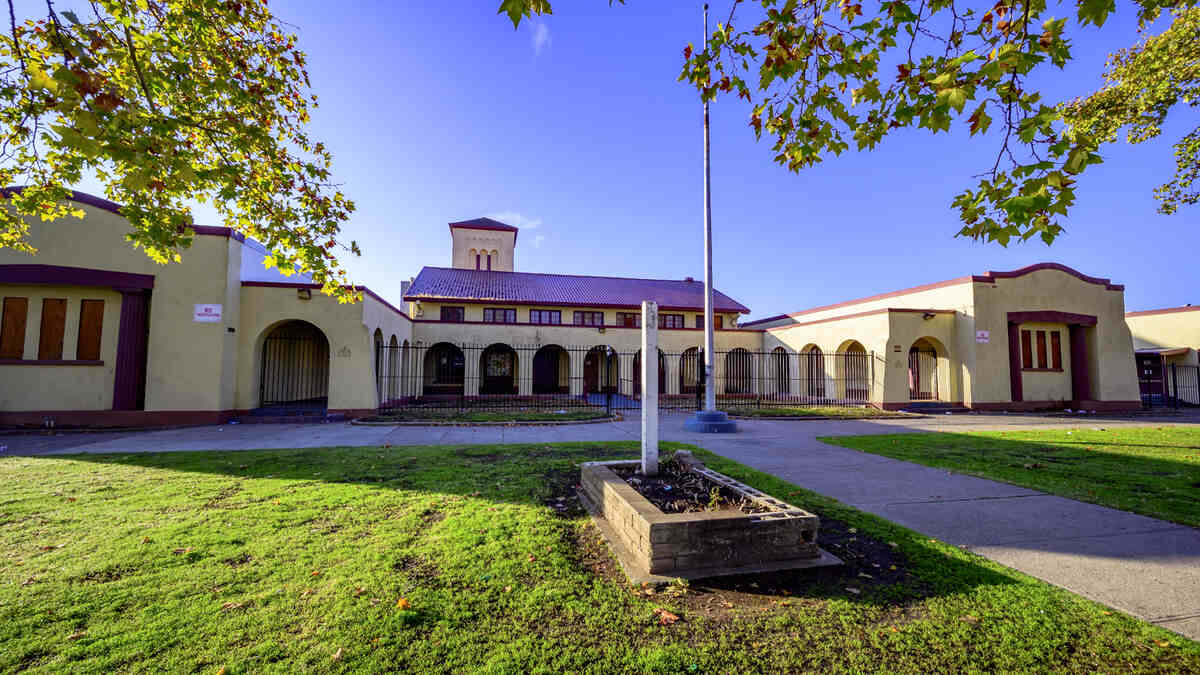
In the face of drought and water restrictions, homeowners in Sacramento will want to make a smart decision about the type of grass they use. If you’re looking to save water, money, and time on lawn maintenance, check out these six best grass types for Sacramento, CA.
The six best grass types for Sacramento:
Looking for a quick guide? Skip to our how to choose the best grass type for Sacramento section to get the highlights on which grasses work best for your yard.
St. Augustinegrass
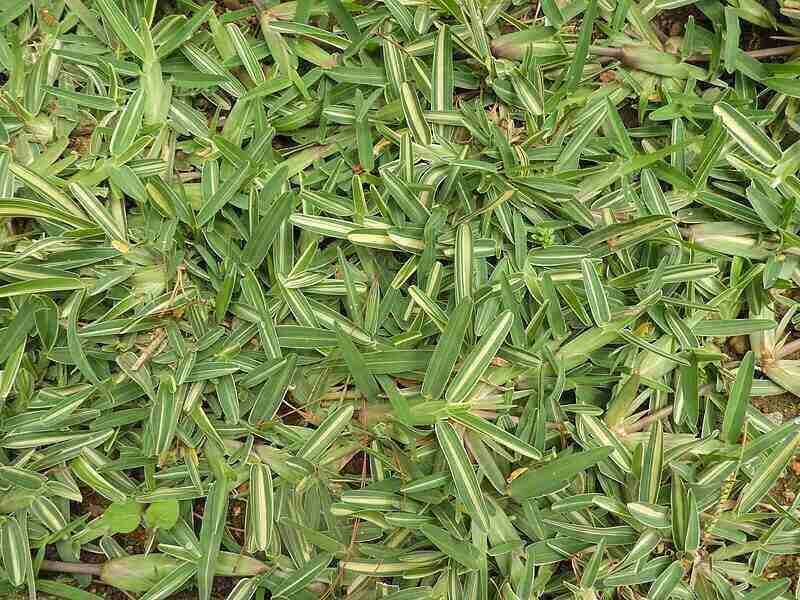
Photo Credit: Yercaud-elango / Wikimedia Commons / CC BY-SA 4.0
Widely used as a partial-shade grass in warm climates, coarse-bladed St. Augustinegrass grows in the heat and is relatively dense, keeping weeds from getting a start. It is water efficient and has fewer pest problems than other grasses.
However, it does require more maintenance than normal. You will have to mow regularly, and be on the lookout for thatch buildup.
- Classification: Warm-season grass
- Spreads by: Stolons
- Shade tolerance: Most shade tolerant warm-season grass.
- Drought tolerance: Moderate to High
- Foot traffic tolerance: Low
- Maintenance needs: Needs frequent mowing due to fast growth rate; develops thatch easily; needs regular fertilization
- Mowing height: Set the mowing height between 3.5 and 4 inches.
- Potential for disease: Moderate to high
- Soil pH: 6-7.5
- Soil type: Tolerates many soil types; prefers moderately fertile and moist (not waterlogged) soils; doesn’t tolerate soil compaction
Grass Plug Options:
– Seed Ranch St Augustine Seville Grass Plugs (2 Trays)
– Seed Ranch St Augustine Floratam Grass Plugs (2 Trays)
Tall Fescue
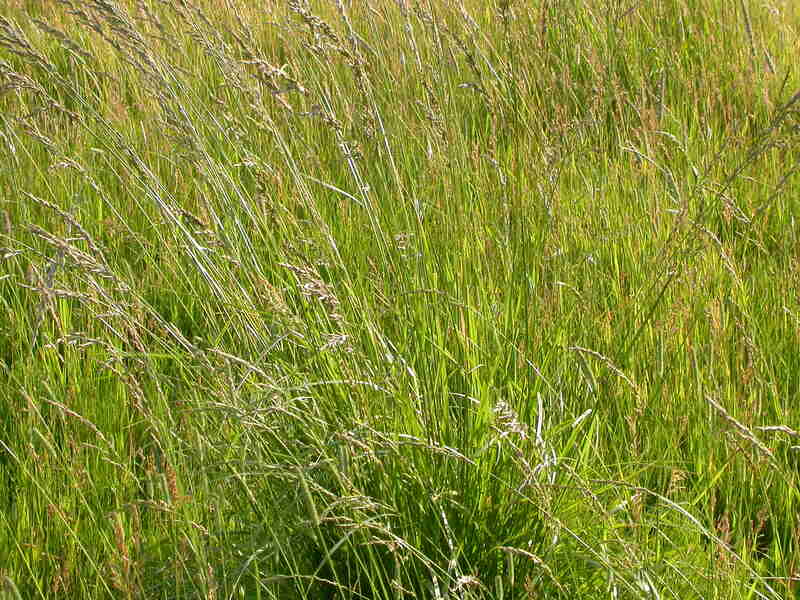
Photo Credit: Matt Lavin / Flickr / CC BY-SA 2.0
Tall fescue is seen as the best choice as a cool-season grass, but it is good in shade, making a prime choice for yards that get only 4-5 hours of direct sun. Tall fescue has a deep root system that enables it to stand up to the heat waves of Northern California.
Tall fescue is not maintenance-free, however. Homeowners will need to mow their lawn regularly and overseed when it starts to thin. Since tall fescue is a bunch-type grass, it does not self-repair.
- Classification: Cool-season grass
- Spreads by: Produces short rhizomes but has a bunch-type growth habit
- Shade tolerance: Moderate
- Drought tolerance: Moderate to High
- Foot traffic tolerance: Moderate
- Maintenance needs: Frequent mowing. Does not produce significant thatch.
- Mowing height: Set mowing height to 2 inches when grass reaches 3 inches tall.
- Potential for disease: Tolerant of most diseases when properly maintained.
- Soil pH: 5.5-6.5
- Soil type: Adapted to a wide range of soil conditions, but prefers fertile clay soils with good drainage.
Grass Seed Options:
– Triple-Play Tall Fescue Grass Seed Blend (5000 sq ft)
– Eretz Kentucky 31 K31 Tall Fescue Grass Seed (choose your size)
– Pennington The Rebels Tall Fescue Grass Seed Mix (7 lb.)
Bermudagrass
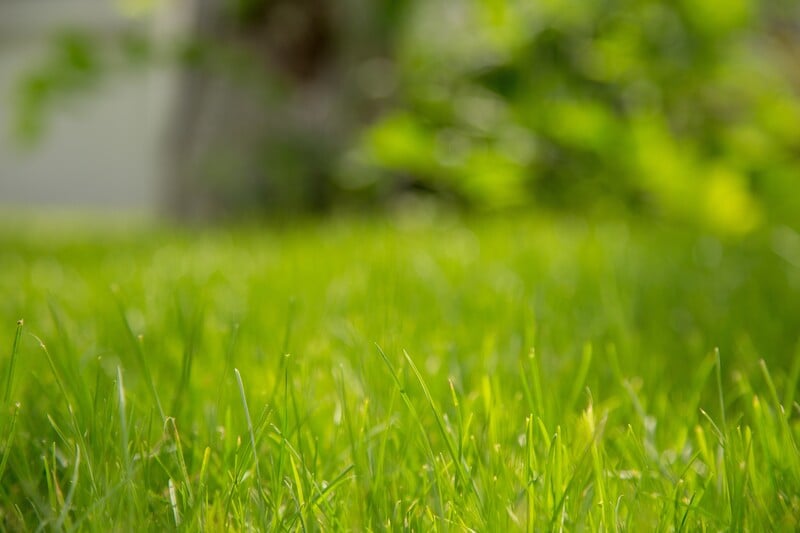
Photo Credit: Pexels
Bermudagrass excels in sun and when the temperature is high. It not only can handle 6-8 hours of direct sun every day, it does best in it. Bermudagrass also does well in drought conditions, a factor in the resurgence of its use the past decade.
However, it struggles in shade and when the weather turns cool. It is known to become dormant in the late fall and winter. During its periods of dormancy, weeds will develop, creating more work in the spring.
- Classification: Warm-season grass
- Spreads by: Stolons and rhizomes
- Shade tolerance: Low; thrives in full sun
- Drought tolerance: High
- Foot traffic tolerance: High
- Maintenance needs: Needs frequent mowing due to fast growth rate; develops thatch easily; needs regular fertilization
- Mowing height: Set the mowing height between 0.5 and 1.5 inches for hybrid bermudagrass cultivars. Mow common bermudagrass down to 1.5 to 2.5 inches.
- Potential for disease: Good resistance to disease, although diseases are common; low resistance to insects
- Soil pH: 6-6.5
- Soil type: Tolerates most soil types
Grass Seed Options:
– Pennington Bermudagrass Bare Spot (5 lb. bag)
– Pennington Smart Seed Bermudagrass Mix (8.75-lb. bag)
– Scotts Turf Builder Bermudagrass (10-lb. bag)
– Hancock Seed Co. Bermudagrass (50-lb. bag)
Buffalograss
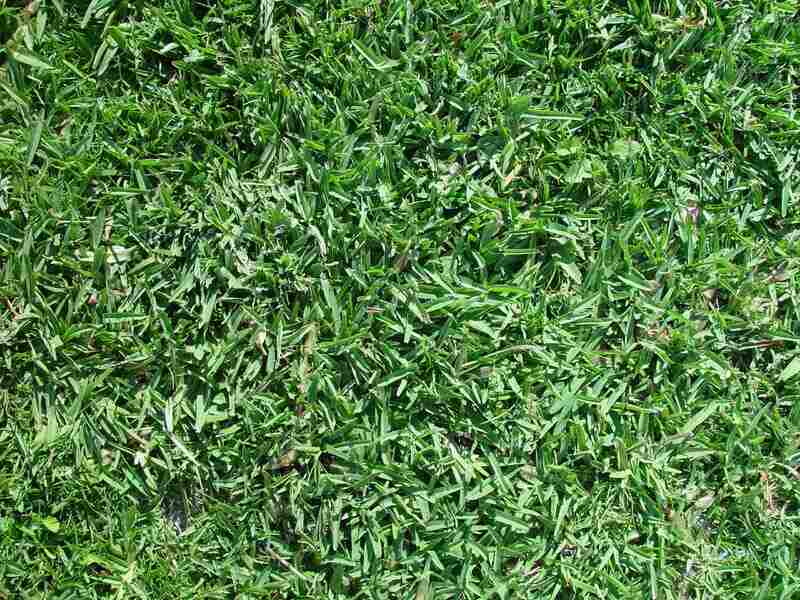
Photo Credit: Pixnio
Buffalograss is known for being a drought-resistant grass, leading to a resurgence in its use throughout California. Homeowners turn to it because it needs little maintenance, a minimum amount of fertilizer, and little water, especially if it remains unmowed.
However, the turf ranks low on quality and it isn’t tolerant of shade. Cultivars are being developed in California, however, to make it a more viable option for home lawns. One that is growing in use is UC Verde buffalograss, which was created as a research program by UC Davis and UC Riverside.
- Classification: Warm-season grass
- Spreads by: Stolons
- Shade tolerance: Low
- Drought tolerance: High
- Foot traffic tolerance: Low
- Maintenance needs: Low fertilizer and mowing needs. Requires weed control.
- Mowing height: Set the mowing height between 2 and 3 inches or leave unmowed.
- Potential for disease: Good tolerance against diseases and insects
- Soil pH: 6.5-7.5
- Soil type: Native clay soils, not sandy soils
- Note: The attributes of native buffalograss and newer cultivars may differ in certain areas.
Grass Seed Options:
– Everwilde Farms Buffalograss Seeds (1 lb. of seeds)
– Scotts Pursue Buffalograss with Natural Seed (1 lb. of seeds)
– Outsidepride Perennial Buffalo Grass Seed (2 lb. of seeds)
Kentucky Bluegrass

Photo Credit: Matt Lavin / Flickr / CC BY-SA 2.0
Kentucky bluegrass is popular across the country, but needs special care in Sacramento during the summer. It struggles in the heat of summer, and when it doesn’t get enough water, it gives way to weeds and disease and will go dormant. (Think of this as a great opportunity to experiment with painting your lawn.)
However, it does very well during the winter, fall, and spring. Cultivars are being developed to address the problems. But most of all, it is an excellent choice to blend with perennial ryegrass to give better year-round success.
- Classification: Cool-season grass
- Spreads by: Rhizomes
- Shade tolerance: Low
- Drought tolerance: Moderate
- Foot traffic tolerance: Moderate
- Maintenance needs: Moderate mowing frequency and high fertilization needs.
- Mowing height: Set mowing height between 2.5 and 3.5 inches.
- Potential for disease: Moderate to high; prone to several diseases, such as dollar spot, leaf spot, necrotic ring spot, summer patch, and stripe smut.
- Soil pH: 6-7.5
- Soil type: Performs best in well-drained, heavy soils with high fertility.
Pro Tip: Red fescue is often included in a mix with Kentucky bluegrass for a sun-shade lawn, as it has a high tolerance for shade. It also does well in cold temperatures and needs low to moderate amounts of water and low amounts of fertilizer. You can mow it or leave it long for a meadow-like look.
Grass Seed Options:
– Jonathan Green (11970) Blue Panther Kentucky Bluegrass Grass Seed (3 lbs.)
– SeedRanch Midnight Kentucky Bluegrass Seed (5 lbs.)
– Jacklin Seed – Biltmore Blue Blend – 100% Kentucky Bluegrass (5 lbs.)
Perennial Ryegrass
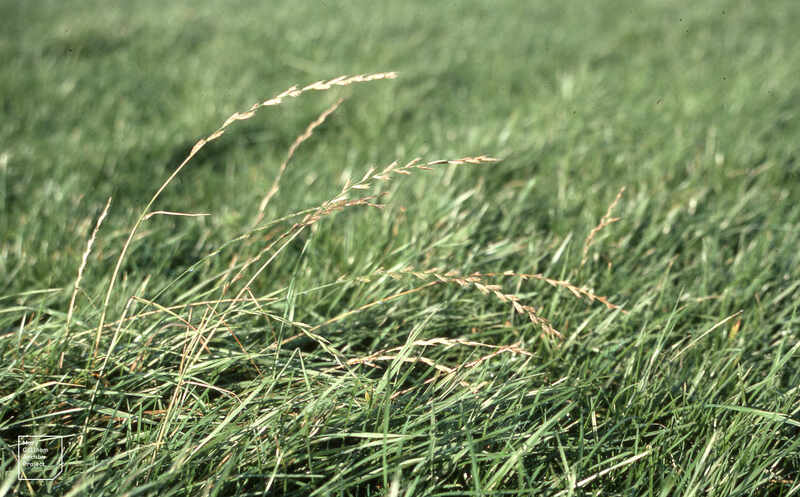
Photo Credit: Dr Mary Gillham Archive Project / Flickr / CC BY 2.0
A prime choice for use by homeowners, perennial ryegrass can handle a lot of use (let the kids play, invite the neighbors over, set up the badminton net). (But plan to overseed if wear occurs, as it won’t recover on its own.) It does best in the sun, but can handle partial shade.
Perennial ryegrass is often the choice to combine with Kentucky bluegrass to create a more disease- and wear-resistant cool-season lawn. Also, since it grows fast, it is often used on dirt spots that turn up on lawns.
- Classification: Cool-season grass
- Spreads by: Has a bunch-type growth habit
- Shade tolerance: Low
- Drought tolerance: Low
- Foot traffic tolerance: High
- Maintenance needs: Moderate mowing and fertilization requirements. Thatch is not significant.
- Mowing height: Set mowing height to 1.5 to 2.5 inches
- Potential for disease: High. Common diseases include gray leaf spot, red thread, and leaf spot/melting-out.
- Soil pH: Can grow in soils with a pH between 5 and 8, but prefers between 6 and 7.
- Soil type: Prefers good drainage and fertility, but can tolerate some poor drainage.
Grass Seed Options:
– Outsidepride Perennial Ryegrass Seed (5 lbs.)
– Eretz ProTurf Perennial Ryegrass Fine Lawn Seed (choose your size)
How to Choose the Best Grass Type for Sacramento
Drought Tolerance
Every decision about your lawn in Sacramento will revolve around the issue of water. It is a concern that is more likely to get worse than better. You will regret it if you don’t take this into account when selecting your grass. Drought-tolerant grasses* are a must in Sacramento.
- High tolerance for drought: Bermudagrass, buffalograss
- Medium tolerance: St. Augustinegrass, tall fescue, Kentucky bluegrass
- Low tolerance: Perennial ryegrass
*The terms drought tolerant and drought resistant are often used interchangeably, but drought-resistant grasses and plants are better suited for surviving longer periods without water. Drought-resistant grasses are likely to be native grasses due to their hundreds or thousands of years in the area and very deep root systems.
What Your Lawn Will Look Like
If you want a lawn to die for, you can invest the money and time. But if you aren’t careful, you can end up with maintenance that takes either a lot of your money, or a lot of your time, when you didn’t intend for it to be so.
- High quality appearance: Kentucky bluegrass, perennial ryegrass
- Medium appearance: Bermudagrass (depends on how well it is maintained and the cultivar), tall fescue, St. Augustinegrass
- Not considered to be attractive: Buffalograss (depending on the cultivar and mowing choice)
How You Will Use Your Lawn
Do you want a lawn for the kids to play on? How about one where you can invite batches of friends for a lawn party? Or one that keeps the soil from washing away? All are valid. But call for different grasses.
- High tolerance for traffic: Bermudagrass, perennial ryegrass
- Medium tolerance: Tall fescue, Kentucky bluegrass
- Low tolerance: Buffalograss, St. Augustinegrass,
Resistance to Pests*
Healthy, growing grass is the best defense against lawn pests, but in the drought and the Sacramento climate, it isn’t as easy to get that.
- High resistance to pests: St. Augustinegrass (when well adapted to the area), tall fescue, buffalograss
- Low resistance: Bermudagrass, Kentucky bluegrass, perennial ryegrass
*Can vary widely depending on the cultivar and the climate.
Sun or Shade
A yard with 6 hours or more of direct sun calls for a far different grass than a yard with four hours or less. Have a bunch of shade trees? A tall fence? Or none of that? It matters.
- If you have a little sun, a lot of shade: St. Augustinegrass
- Struggles in the summer sun: Kentucky bluegrass, tall fescue
- Good in the sun, not in the shade: Bermudagrass, buffalograss, perennial ryegrass
A Call to Action
In the time of drought, when water use is such an issue, it can make a great deal of sense to call in a professional. Contact a LawnStarter lawn care pro in Sacramento to maintain your drought-resistant lawn and help it thrive all year long.
LawnStarter participates in the Amazon Services LLC Associates Program, an affiliate advertising program. LawnStarter earns revenue from products promoted in this article.
Main Image Credit: Sacramento / Pena645 / Wikimedia Commons / CC BY-SA 4.0